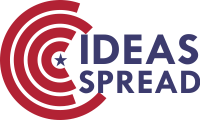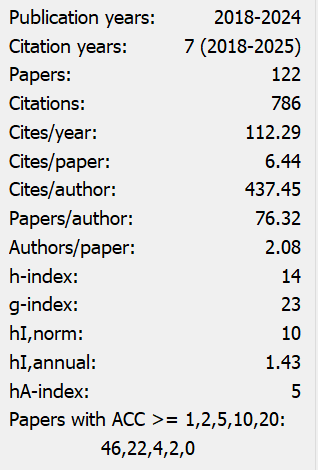Brand Loyalty's Moderating Role Between Emotional Intelligence and Impulse Purchases: A Case Study in Turkey
Abstract
This study aims to investigate the moderator role of brand loyalty in the relationship between emotional intelligence and impulse buying behavior. The sample of the study consists of consumers living in Turkey. Using the convenience sampling method, a survey was conducted with 956 people who shopped in the ready-to-wear department. Hypotheses were tested through SPSS and AMOS. The collected statistical data showed that there is a negative and significant relationship between emotional intelligence and impulse purchases, and that brand loyalty has a mediating role in this relationship. Although much research in the literature studies emotional intelligence and consumer behaviors in separate contexts, there is a limited number of studies that study them together. Thus, it is thought that this study will bring a new perspective to the literature.
References
Akram, U., Hui, P., Khan, M. K., Hashim, M., & Rasheed, S. (2016). Impact of store atmosphere on impulse buying behaviour: Moderating effect of demographic variables. International Journal Of U- And E-Service, Science And Technology, 9(7), 43–60. http://dx.doi.org/10.14257/ijunesst.2016.9.7.05
Aziziha, H., Faraji, A., Khodsetan, A., Mousavi, S., & Alikhani, E. (2014). An investigation on the effects of emotional intelligence on development of brand equity. Management Science Letters, 4(2), 311-314.
Back, K.-J., & Parks, S. C. (2003). A brand loyalty model involving cognitive, affective, and conative brand loyalty and customer satisfaction. Journal of Hospitality & Tourism Research, 27(4), 419–435. https://doi.org/10.1177/10963480030274003
Bagozzi, R. P. (1978). The construct validity of the affective, behavioral, and cognitive components of attitude by analysis of covariance structures. Multivariate Behavioral Research, 13(1), 9–31. https://doi.org/10.1207/s15327906mbr1301_2
Bagozzi, R. P., Gopinath, M., & Nyer, P. U. (1999). The role of emotions in marketing. Journal of the Academy of Marketing Science, 27(2), 184–206. https://doi.org/10.1177/0092070399272005
Baron, R. M., & Kenny, D. A. (1986). The moderator-mediator variable distinction in social psychological research: Conceptual, strategic, and statistical considerations. Journal of Personality and Social Psychology, 51(6), 1173–1182. https://doi.org/10.1037/0022-3514.51.6.1173
Baumeister, R. F. (2002). Yielding to temptation: Self-control failure, impulsive purchasing, and consumer behavior. Journal of Consumer Research, 28(4), 670–676. https://doi.org/10.1086/338209
Bell, H. (2011). A contemporary framework for emotions in consumer decision making: Moving beyond traditional models. International Journal of Business and Social Science, 2(17), 12–16.
Bowen, J. T., & Chen, S. (2001). The relationship between customer loyalty and customer satisfaction. International Journal of Contemporary Hospitality Management, 13(5), 213–217. https://doi.org/10.1108/09596110110395893
Büyüköztürk, Y. (2002). Faktör Analizi: Temel Kavramlar ve Ölçek Geliştirmede Kullanımı (Factor analysis: Basic concepts and using to development scale). Kuram ve Uygulamada Eğitim Yönetimi, 32, 470-483.
Chen, S.-C. (2015). Customer value and customer loyalty: Is competition a missing link? Journal of Retailing and Consumer Services, 22, 107–116. https://doi.org/10.1016/j.jretconser.2014.10.007
Dick, A. S., & Basu, K. (1994). Customer loyalty: Toward an integrated conceptual framework. Journal of the Academy of Marketing Science, 22(2), 99–113. https://doi.org/10.1177/0092070394222001
Fullerton, G. (2003). When does commitment lead to loyalty? Journal of Service Research, 5(4), 333–344. https://doi.org/10.1177/1094670503005004005
Gifford, R., & Newmeyer, C. E. (2017). Brand leadership: Behaviors that drive brand and consumer engagement-An abstract. In M. Stieler (Ed.), Creating marketing magic and innovative future marketing trends: Proceedings of the 2016 Academy of Marketing Science (AMS) annual conference (pp. 627–628). Springer International Publishing. https://doi.org/10.1007/978-3-319-45596-9
Gilbride, T. J., Inman, J. J., & Stilley, K. M. (2015). The role of within-trip dynamics in unplanned versus planned purchase behavior. Journal of Marketing, 79(3), 57–73. https://doi.org/10.1509/jm.13.0286
Gürbüz, S., & Şahin, F. (2016). Sosyal bilimlerde araştırma yöntemleri (Research methods in social sciences) (3rd ed.). Seçkin Yayıncılık.
Hair, J. F., Black, W. C., Babin, B. J., Anderson, R. E., & Tatham, R. L. (2006). Multivariate data analysis. Pearson Prentice Hall.
Hausman, A. (2000). A multi-method investigation of consumer motivations in impulse buying behavior. Journal of Consumer Marketing, 17(5), 403–426. https://doi.org/10.1108/07363760010341045
Hayes, A. F. (2017). Partial, conditional, and moderated mediation: Quantification, inference, and interpretation. Communication Monographs, 85(1), 4–40. https://doi.org/10.1080/03637751.2017.1352100
Hopkins, K. D., & Weeks, D. L. (1990). Tests for normality and measures of skewness and kurtosis: Their place in research reporting. Educational and Psychological Measurement, 50(4), 717–729. https://doi.org/10.1177/0013164490504001
Hoyer, W. D., & Brown, S. P. (1990). Effects of brand awareness on choice for a common, repeat-purchase product. Journal of Consumer Research, 17(2), 141. https://doi.org/10.1086/208544
Huang, L.-T. (2015). Exploring utilitarian and hedonic antecedents for adopting information from a recommendation agent and unplanned purchase behaviour. New Review of Hypermedia and Multimedia, 22(1-2), 139–165. https://doi.org/10.1080/13614568.2015.1052098
Irissappane, D. A., & Shankardevi, B. (2015). Influence of consumers' emotional characteristics on brand love. Pacific Business Review International, 7(11), 76–80.
Jones, M. A., Reynolds, K. E., Weun, S., & Beatty, S. E. (2003). The product-specific nature of impulse buying tendency. Journal of Business Research, 56(7), 505–511. https://doi.org/10.1016/s0148-2963(01)00250-8
Kadic-Maglajlic, S., Vida, I., Obadia, C., & Plank, R. (2016). Clarifying the influence of emotional intelligence on salesperson performance. Journal of Business & Industrial Marketing, 31(7), 877–888. https://doi.org/10.1108/jbim-09-2015-0168
Kandampully, J., Zhang, T. (Christina), & Bilgihan, A. (2015). Customer loyalty: A review and future directions with a special focus on the hospitality industry. International Journal of Contemporary Hospitality Management, 27(3), 379–414. https://doi.org/10.1108/ijchm-03-2014-0151
Kemp, E., & Kopp, S. W. (2011). Emotion regulation consumption: When feeling better is the aim. Journal of Consumer Behaviour, 10(1), 1–7. https://doi.org/10.1002/cb.341
Khan, I. (2022). Do brands’ social media marketing activities matter? A moderation analysis. Journal of Retailing and Consumer Services, 64, 102794. https://doi.org/10.1016/j.jretconser.2021.102794
Khan, I., & Fatma, M. (2021). Online destination brand experience and authenticity: Does individualism-collectivism orientation matter? Journal of Destination Marketing & Management, 20, 100597. https://doi.org/10.1016/j.jdmm.2021.100597
Khan, I., Fatma, M., Shamim, A., Joshi, Y., & Rahman, Z. (2020). Gender, loyalty card membership, age, and critical incident recovery: Do they moderate experience-loyalty relationship? International Journal of Hospitality Management, 89, 102408. https://doi.org/10.1016/j.ijhm.2019.102408
Kidwell, B., Hardesty, D. M., Murtha, B. R., & Sheng, S. (2011). Emotional intelligence in marketing exchanges. Journal of Marketing, 75(1), 78–95. https://doi.org/10.1509/jmkg.75.1.78
Krejcie, R. V., & Morgan, D. W. (1970). Determining sample size for research activities. Educational and Psychological Measurement, 30(3), 607–610. https://doi.org/10.1177/001316447003000308
Kumar Mishra, M., Kesharwani, A., & Das, D. (2016). The relationship between risk aversion, brand trust, brand effect, and loyalty. Journal of Indian Business Research, 8(2), 78–97. https://doi.org/10.1108/jibr-04-2015-0045
Lee, G. Y., & Yi, Y. (2008). The effect of shopping emotions and perceived risk on impulsive buying: The moderating role of buying impulsiveness trait. Journal of Business Research, 14(2). https://doi.org/10.35152/snusjb.2008.14.2.004
Macdonald, E. K., & Sharp, B. M. (2000). Brand awareness effects on consumer decision making for a common, repeat purchase product. Journal of Business Research, 48(1), 5–15. https://doi.org/10.1016/s0148-2963(98)00070-8
Mathai, S. T., & Haridas, R. (2014). Personality-its impact on impulse buying behaviour among the retail customers in Kochi City. IOSR Journal of Business and Management, 16(4), 48–55. https://doi.org/10.9790/487X-16444855
Mayer, J. D., & Salovey, P. (1997). What is emotional intelligence? Emotional Development and Emotional Intelligence. http://doi.org/10.1177/1066480710387486
Miller, A. R., & Grazer, W. F. (2003). Complaint behavior as a factor in cruise line losses. Journal of Travel & Tourism Marketing, 15(1), 77–91. https://doi.org/10.1300/j073v15n01_05
Nair, D., & Das, S. (2015). Impact of emotional intelligence on impulse buying and product value proposition. European Journal of Business and Management, 7(1), 165–172. https://core.ac.uk/download/pdf/234626175.pdf
Nunnally, J. C. (1967). Psychometric theory. McGraw-Hill. https://doi.org/10.3102/00028312005003431
Oliver, R. L. (1999). Whence consumer loyalty? Journal of Marketing, 63(4), 33–44. https://doi.org/10.1177/00222429990634s105
Peter, P., & Krishnakumar, S. (2010). Emotional intelligence, impulse buying, and self-esteem: The predictive validity of two ability measures of emotional intelligence. Advances in Consumer Research, 37, 877–878.
Picón-Berjoyo, A., Ruiz-Moreno, C., & Castro, I. (2016). A mediating and multigroup analysis of customer loyalty. European Management Journal, 34(6), 701–713. https://doi.org/10.1016/j.emj.2016.07.006
Pop, N. A., Iorga, A., & Pelau, C. (2013). Process, using neuromarketing studies to explore emotional intelligence as a key to the buying decision. European Conference on Knowledge Management, 1-8.
Pradipto, Y. D., Winata, C., Murti, K., & Azizah, A. (2016). Think again before you buy: The relationship between self-regulation and impulsive buying behaviors among Jakarta young adults. Procedia - Social and Behavioral Sciences, 222, 177–185. https://doi.org/10.1016/j.sbspro.2016.05.209
Rook, D. W., & Fisher, R. J. (1995). Normative influences on impulsive buying behavior. Journal of Consumer Research, 22(3), 305. https://doi.org/10.1086/209452
Šeinauskienė, B., Maščinskienė, J., & Jucaitytė, I. (2015). The relationship of happiness, impulse buying, and brand loyalty. Procedia - Social and Behavioral Sciences, 213, 687–693. https://doi.org/10.1016/j.sbspro.2015.11.487
Shukla, P. (2011). Impact of interpersonal influences, brand origin, and brand image on luxury purchase intentions: Measuring interfunctional interactions and a cross-national comparison. Journal of World Business, 46(2), 242–252. https://doi.org/10.1016/j.jwb.2010.11.002
Silva, G. M., & Gonçalves, H. M. (2016). Causal recipes for customer loyalty to travel agencies: Differences between online and offline customers. Journal of Business Research, 69(11), 5512–5518. https://doi.org/10.1016/j.jbusres.2016.04.163
Tek, Ö. B., & Orel, F. D. (2006). Perakende Pazarlama Yönetimi (Retail Marketing Management). Birleşik Matbaacılık.
Toufaily, E., Ricard, L., & Perrien, J. (2013). Customer loyalty to a commercial website: Descriptive meta-analysis of the empirical literature and proposal of an integrative model. Journal of Business Research, 66(9), 1436–1447. https://doi.org/10.1016/j.jbusres.2012.05.011
Tsai, Y.-C., Chang, H.-C., & Ho, K.-C. (2015). A study of the relationship among brand experiences, self-concept congruence, customer satisfaction, and brand preference. Contemporary Management Research, 11(2), 97–116. https://doi.org/10.7903/cmr.12970
Verplanken, B., & Sato, A. (2011). The psychology of impulse buying: An integrative self-regulation approach. Journal of Consumer Policy, 34(2), 197–210. https://doi.org/10.1007/s10603-011-9158-5
Vohs, K. D., & Faber, R. J. (2007). Spent resources: Self-regulatory resource availability affects impulse buying. Journal of Consumer Research, 33(4), 537–547. https://doi.org/10.1086/510228
Zampetakis, L. A. (2014). The emotional dimension of the consumption of luxury counterfeit goods: an empirical taxonomy. Marketing Intelligence & Planning, 32(1), 21–40. https://doi.org/10.1108/mip-10-2012-0102


This work is licensed under a Creative Commons Attribution 4.0 International License.
Copyright for this article is retained by the author(s), with first publication rights granted to the journal.
This is an open-access article distributed under the terms and conditions of the Creative Commons Attribution license (http://creativecommons.org/licenses/by/4.0/).


























